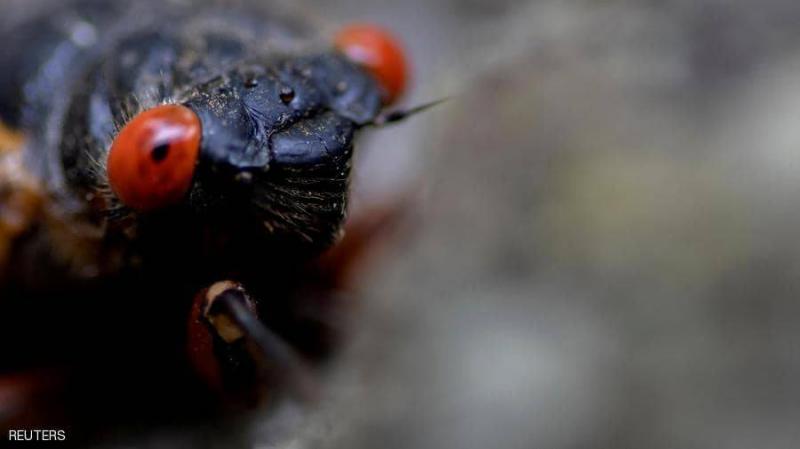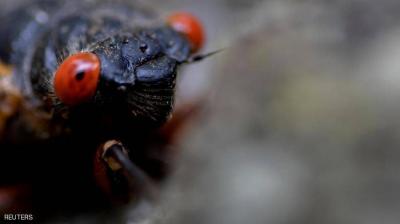The Chinese are not the only ones who indulge in cooking and consuming insects and wild animals; Americans also share this peculiar behavior, according to many cultures around the world. With the emergence of millions of cicadas in North America at the beginning of June, spreading across 15 U.S. states and Washington, D.C., many Americans have shown interest in catching and cooking cicadas. Some prefer them fried or roasted, while others mix them into pizza or pasta ingredients, or incorporate them into bread dough, or use them to garnish chocolate dishes.
The motivations for consuming insects and wild animals differ between the Chinese and Americans. This unusual tradition has deep roots in China, passed down since the famines of the last century, while Americans have turned to cooking cicadas as a way to cope with these noisy visitors that swarm North America every year or on a cyclic basis every 13 or 17 years.
#### Pest Management
"Are cicada swarms bothering you? You can just skewer them," reads a report from the Chicago Sun-Times by writer Mark Kennedy, suggesting turning a source of annoyance, the cicadas, into a "delicious meal." He states that the swarms of red-eyed insects, which re-emerged after 17 years underground, presented an opportunity to prepare homemade snacks by gathering them while they are "small and soft" before their bodies harden, using them to decorate pizzas or chocolate dishes.
Mark mentions that cicada-infused chocolate dishes appeared at the home of entomologists Michael Raupp and Paula Shrewsbury at the University of Maryland in Columbia, Maryland.
#### Cicada Cooking Recipes
David George Gordon, author of the "Eat-a-Bug Cookbook," asserts that "we need to overcome our dislike of insects; this feeling is strong and deeply rooted in most people in our culture." He suggests quick frying methods or mixing cicadas into dough for bread, particularly banana bread. Gordon emphasizes the numerous benefits of consuming cicadas, stating they are edible, rich in protein, good fats, calcium, iron, and zinc, gluten-free, low in fat, and low in carbohydrates.
From an environmental perspective, Gordon points out that cicadas emit less gas than livestock and require minimal agricultural space or water. The prevalence of cicadas as food is on the rise, much like pasta; in parts of Asia, some insects are sold in bags like peanuts or potato chips.
When asked about others' impressions of his remarks about cooking insects, Gordon notes that people are now taking his suggestions seriously. He mentions that periodic cicadas can be easily caught by hand or with a small net shortly after they emerge. To stop their growth, he recommends submerging them in ice water or freezing them. Experts advise catching cicadas from areas that have not been sprayed with pesticides or chemicals.
Gordon provides readers of the Chicago Sun-Times with a detailed method for making cicada pizza, recommending that they be consumed fresh.
#### Important Warning
With the growing popularity of cicada recipes among Americans, the U.S. Food and Drug Administration has issued a warning for those with shellfish allergies to avoid eating cicadas. Gina Addin, a biologist and environmental scientist who has worked as a climate change advisor for UN agencies such as the Food and Agriculture Organization (FAO), states that cicadas are a healthier option for the planet, especially considering that we will soon have to feed 9 billion people.
Addin points out that high-cost crabs were previously regarded with disgust in the West to the extent that they were fed to prisoners, but perceptions are changing. She mentions that the FAO estimated in 2006 that around 18% of greenhouse gas emissions come from animals raised for meat, like cows, sheep, camels, and chickens, which cicadas do not contribute to.
The Indy Star warns against catching mature cicadas for cooking, recommending that only small bugs be collected right after they emerge or during their molting phase, stressing the importance of catching them alive and in good health, freezing them if cooking is delayed.
#### A Snack for School Students
The Indy Star shares a recipe for a snack for school students made from over 1,400 cicada nymphs! The preparation involves washing the cicadas in cold water multiple times, soaking them in a salt solution for 30 minutes, draining and drying them, and then boiling them in water and vinegar for 5 minutes. They can then be drained from the boiling water and either fried in oil or roasted in an oven at 400 degrees for 10 minutes, seasoned with salt, and served, optionally enhanced with garlic powder, spices, hot sauce, or even chocolate, according to taste.
The recipe's creator acknowledges that most students will feel disgusted, but many cultures regard insects as a primary source of protein, suggesting that once we overcome the notion of eating bugs, we will enjoy their delicious taste as a snack.
The Indy Star also notes a small celebration held by some residents of Bloomington, Indiana, as cicadas emerged on the ground and trees, during which a Crispy Cicada Salad was served, cooked with olive oil, butter, vinegar, minced garlic, fresh thyme, and pepper.
#### The History of Cooking Cicadas
Aisa Pitancourt, an entomologist at the Drexel University Natural Science Academy, tells Lancaster Online that cicadas are a rare delicacy akin to shellfish. Regarding the history of cicada cooking, author Charles Lester mentioned in 1898 that they were collected and cooked in soup, though soup was not the best method since it turned into flecks of skin; frying them like shrimp is the most popular cooking method.
Biologist and cicada expert Gene Kritsky stated in National Geographic in 2013 that most people prefer them well-fried and dipped in sauce or served with a salad. In 2016, the Rising Creek Bakery in Mt. Pennsylvania covered chocolate chip cookies and ice cream cups with one cicada, and also served an avocado and roasted vegetable cicada omelet.




